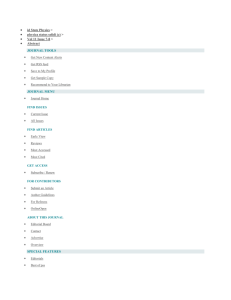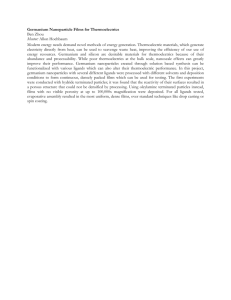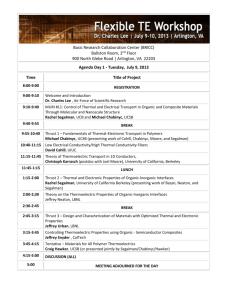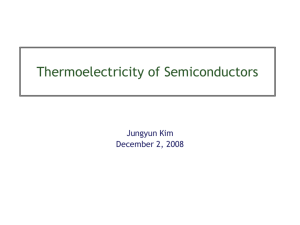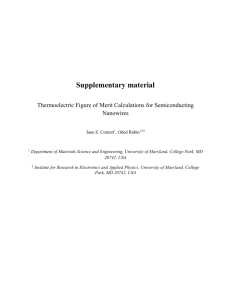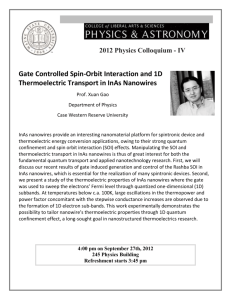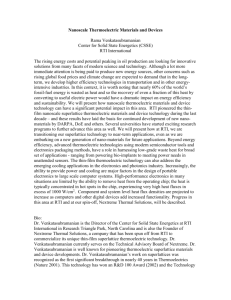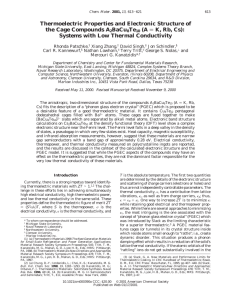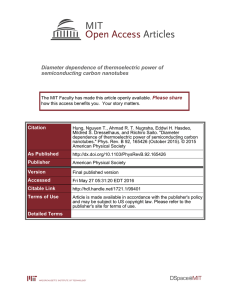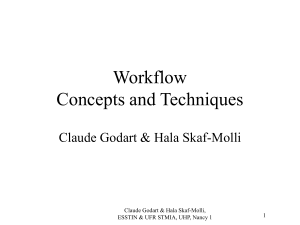Improved thermoelectric properties in the double filled
advertisement
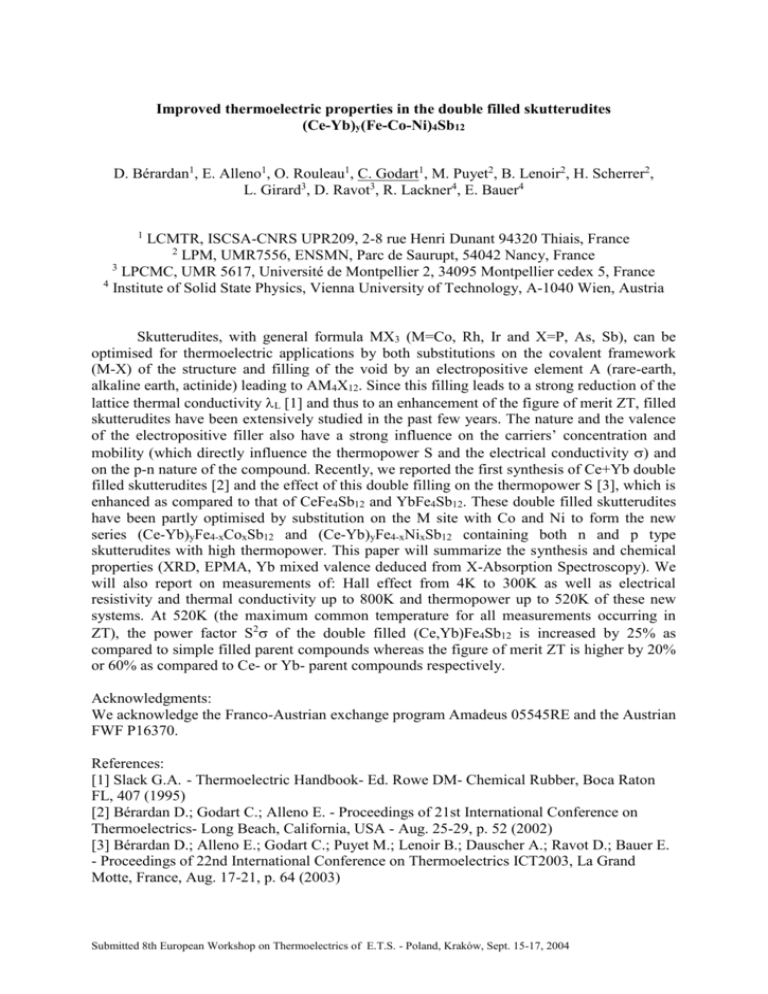
Improved thermoelectric properties in the double filled skutterudites (Ce-Yb)y(Fe-Co-Ni)4Sb12 D. Bérardan1, E. Alleno1, O. Rouleau1, C. Godart1, M. Puyet2, B. Lenoir2, H. Scherrer2, L. Girard3, D. Ravot3, R. Lackner4, E. Bauer4 1 LCMTR, ISCSA-CNRS UPR209, 2-8 rue Henri Dunant 94320 Thiais, France 2 LPM, UMR7556, ENSMN, Parc de Saurupt, 54042 Nancy, France 3 LPCMC, UMR 5617, Université de Montpellier 2, 34095 Montpellier cedex 5, France 4 Institute of Solid State Physics, Vienna University of Technology, A-1040 Wien, Austria Skutterudites, with general formula MX3 (M=Co, Rh, Ir and X=P, As, Sb), can be optimised for thermoelectric applications by both substitutions on the covalent framework (M-X) of the structure and filling of the void by an electropositive element A (rare-earth, alkaline earth, actinide) leading to AM4X12. Since this filling leads to a strong reduction of the lattice thermal conductivity L [1] and thus to an enhancement of the figure of merit ZT, filled skutterudites have been extensively studied in the past few years. The nature and the valence of the electropositive filler also have a strong influence on the carriers’ concentration and mobility (which directly influence the thermopower S and the electrical conductivity ) and on the p-n nature of the compound. Recently, we reported the first synthesis of Ce+Yb double filled skutterudites [2] and the effect of this double filling on the thermopower S [3], which is enhanced as compared to that of CeFe4Sb12 and YbFe4Sb12. These double filled skutterudites have been partly optimised by substitution on the M site with Co and Ni to form the new series (Ce-Yb)yFe4-xCoxSb12 and (Ce-Yb)yFe4-xNixSb12 containing both n and p type skutterudites with high thermopower. This paper will summarize the synthesis and chemical properties (XRD, EPMA, Yb mixed valence deduced from X-Absorption Spectroscopy). We will also report on measurements of: Hall effect from 4K to 300K as well as electrical resistivity and thermal conductivity up to 800K and thermopower up to 520K of these new systems. At 520K (the maximum common temperature for all measurements occurring in ZT), the power factor S2 of the double filled (Ce,Yb)Fe4Sb12 is increased by 25% as compared to simple filled parent compounds whereas the figure of merit ZT is higher by 20% or 60% as compared to Ce- or Yb- parent compounds respectively. Acknowledgments: We acknowledge the Franco-Austrian exchange program Amadeus 05545RE and the Austrian FWF P16370. References: [1] Slack G.A. - Thermoelectric Handbook- Ed. Rowe DM- Chemical Rubber, Boca Raton FL, 407 (1995) [2] Bérardan D.; Godart C.; Alleno E. - Proceedings of 21st International Conference on Thermoelectrics- Long Beach, California, USA - Aug. 25-29, p. 52 (2002) [3] Bérardan D.; Alleno E.; Godart C.; Puyet M.; Lenoir B.; Dauscher A.; Ravot D.; Bauer E. - Proceedings of 22nd International Conference on Thermoelectrics ICT2003, La Grand Motte, France, Aug. 17-21, p. 64 (2003) Submitted 8th European Workshop on Thermoelectrics of E.T.S. - Poland, Kraków, Sept. 15-17, 2004 Technical Topic Category : Skutterudites Presentation preference : Oral Presenting author : Claude GODART Contact author : Claude GODART Laboratoire de Chimie Métallurgique des Terres-Rares ISCSA-CNRS-LCMTR 2-8 rue Henri Dunant 94320 Thiais-France Phone : 33 / 1 49 78 12 47 Fax : 33/ 1 49 78 12 03 E-mail : godart@glvt-cnrs.fr Submitted 8th European Workshop on Thermoelectrics of E.T.S. - Poland, Kraków, Sept. 15-17, 2004

